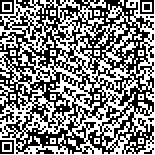唐明姣,孔繁荣,唐智生,等.不同辐射功率的微波对红色毛癣菌酶活性的影响[J].中华物理医学与康复杂志,2019,41(10):731-734
扫码阅读全文

|
| 不同辐射功率的微波对红色毛癣菌酶活性的影响 |
|
| |
| DOI:DOI:10.3760/cma.j.issn.0254-1424.2019.10.003 |
| 中文关键词: 微波 红色毛癣菌 酶联免疫吸附实验 |
| 英文关键词: Microwaves Trichophyton rubrum |
| 基金项目:广西自然科学基金(2013GXNSFAA019198) |
|
| 摘要点击次数: 6174 |
| 全文下载次数: 6179 |
| 中文摘要: |
| 目的 观察不同辐射功率微波对红色毛癣菌β-(1,3)-D-葡聚糖合成酶及琥珀酸脱氢酶活性的影响,探讨其抗真菌作用机制。 方法 将经过形态学鉴定的红色毛癣菌分为实验组及对照组,采用2450 MHz医用微波进行辐射,将实验组按照输出功率分为20 W、40 W、60 W、80 W 4个亚组,每个亚组辐射时间均为15 min,辐射9次。辐射完成后置于27 ℃恒温箱培养。对照组接种完成后立即置于同一恒温箱,不进行任何功率的微波辐射。30 d后提取真菌蛋白酶,采用ELISA法(酶联免疫法)测定标本中β-(1,3)-D-葡聚糖合成酶及琥珀酸脱氢酶活性水平。 结果 随着辐射功率的增加,酶的活性逐渐降低,当输出功率为80 W时,β-(1,3)-D-葡聚糖合成酶及琥珀酸脱氢酶活性分别为(0.730±0.74)U/ml、(1.828±1.774)U/L,与其他3个亚组及对照组比较,80 W组的酶活性显著降低(P<0.05)。 结论 微波对红色毛癣菌酶活性具有抑制作用,并随着辐射功率增大而增强,呈剂量依赖性;微波可在体外诱导红色毛癣菌琥珀酸脱氢酶及β-(1,3)-葡聚糖合成酶活性减弱,导致真菌细胞壁完整性及三羧酸循环被破坏,进而死亡。此外,测定温度变化可能有助于阐明微波的生物效应。 |
| 英文摘要: |
| Objective To investigate the effects of exposing Trichophyton rubrum fungus to microwaves at different intensities in terms of the activity of succinic dehydrogenase and beta-(1, 3)-D-glucan synthase. Methods Trichophyton rubrum organisms were randomly divided into a control group and experimental groups. The experimental groups were incubated at 27 ℃ after direct radiation with 2450 MHz microwaves at 20, 40, 60 or 80 W for 15 min, repeated 8 times. The control group was incubated without any irradiation. Thirty days later, the beta-(1, 3)-D-glucan synthase and succinate dehydrogenase activities were determined using enzyme-linked immunosorbent assays. Results The enzymatic activity decreased gradually with increasing radiation intensity. When the output power was 80 W, the beta-(1,3)-glucan-synthase-D activity was 0.730±0.74 U/ml and that of the succinate dehydrogenase was 1.828±1.774 U/L, both significantly lower than in the groups subjected to less powerful irradiation. Conclusions Microwave radiation can decrease the enzymatic activity of Trichophyton rubrum in a dose-dependent manner. Higher intensity is more effective. Microwave irradiation can decrease the activity of succinate dehydrogenase and beta-(1,3)-glucan synthase from Trichophyton rubrum in vitro, resulting in the destruction of fungal cell walls and interfering with the tricarboxylic acid cycle, furthering cell death. Moreover, the temperature change possibly also helps promote the biological effects of microwave radiation. |
|
查看全文
查看/发表评论 下载PDF阅读器 |
| 关闭 |
|
|
|